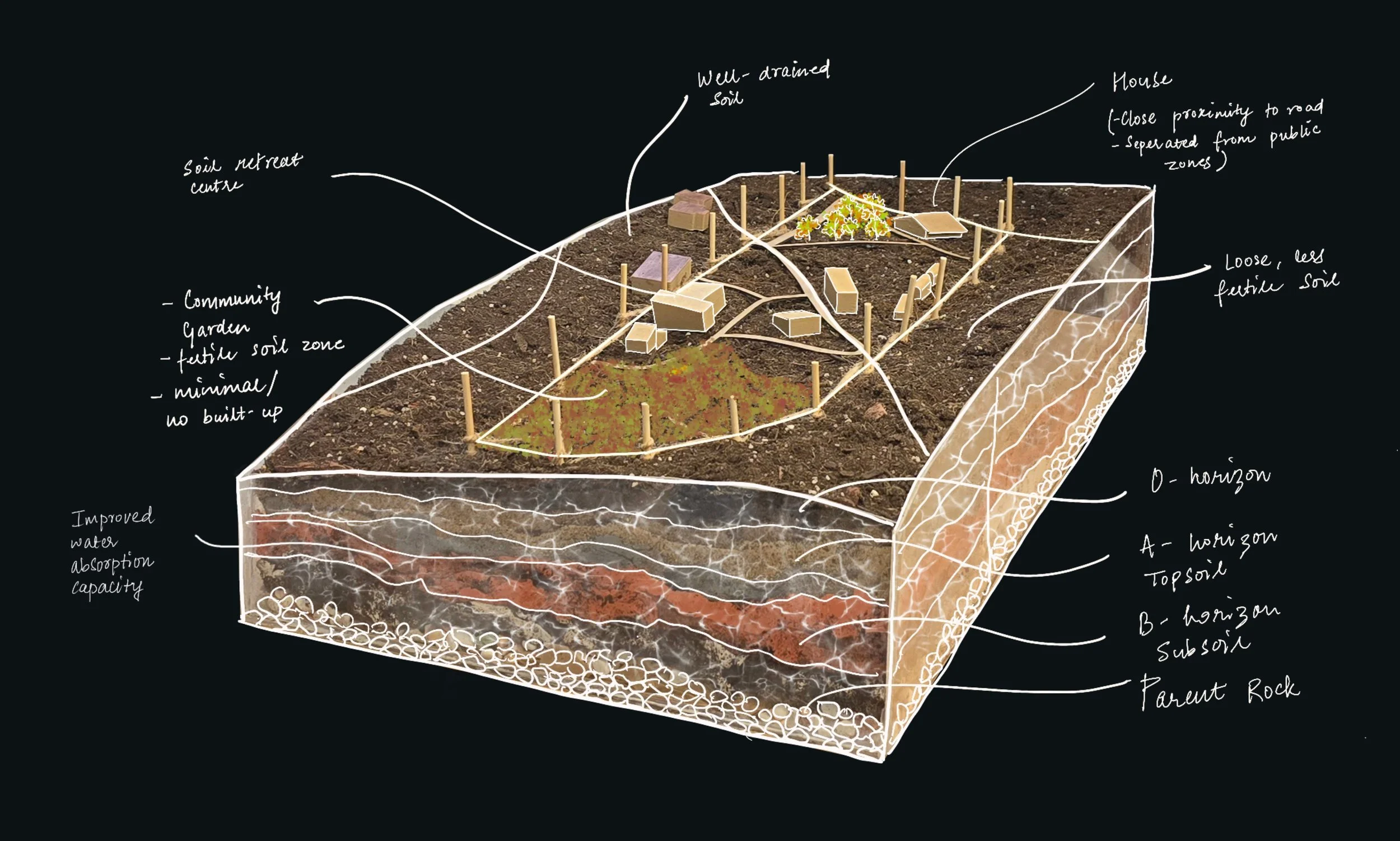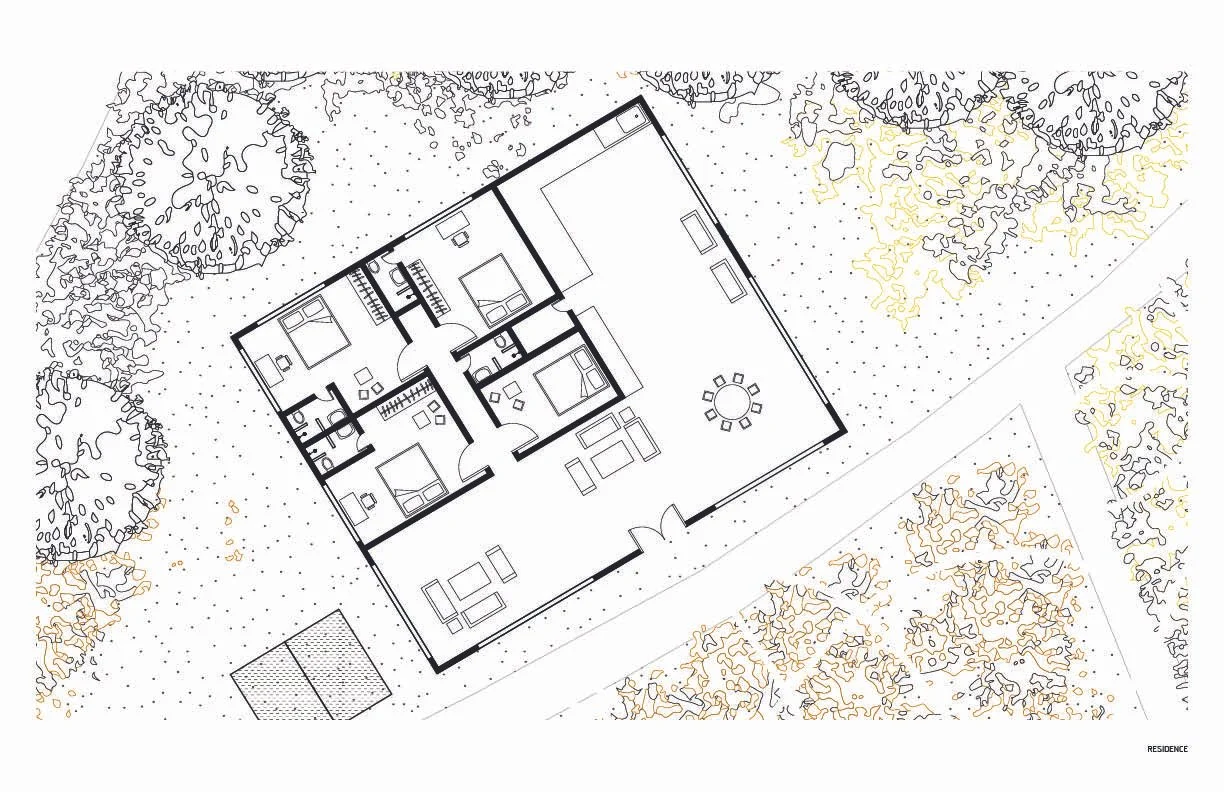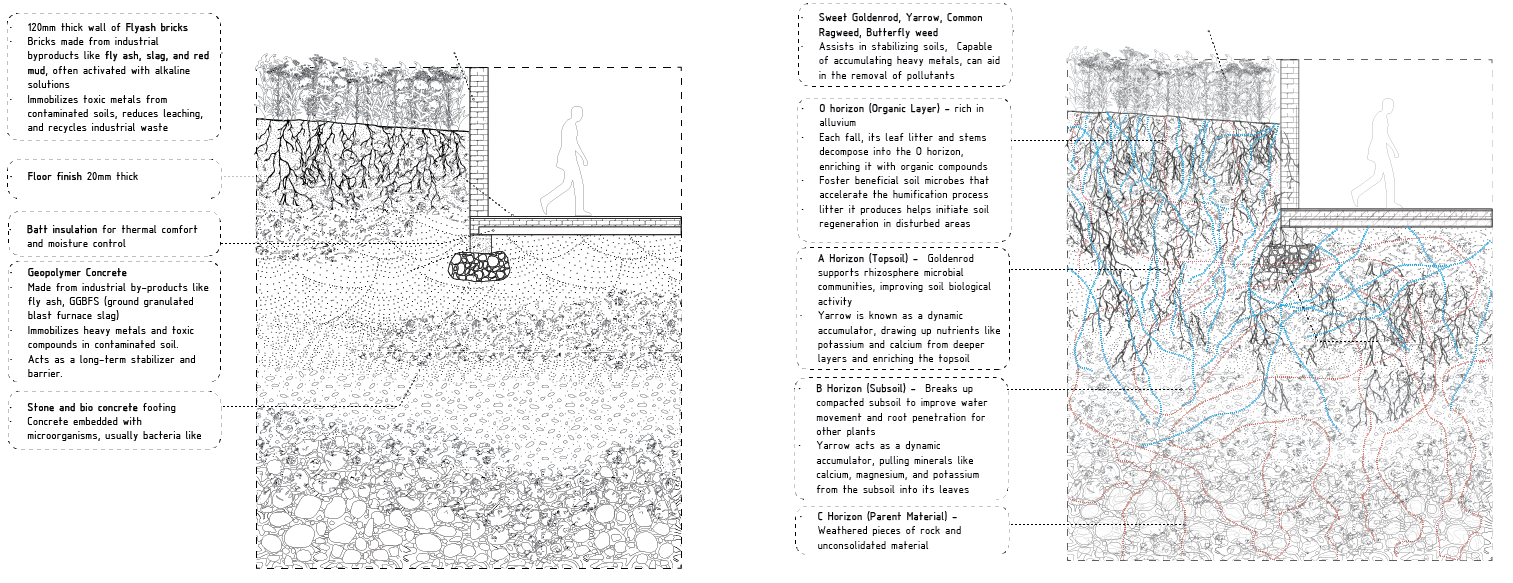SUBTERRANEAN SYNTAX
Semester : Spring 2025
Instructor : Stephanie Lee
Location : Ithaca, New York
Site Area : 4.3 acres
Subterranean Syntax is a thesis that repositions soil from a passive substrate to an active agent in architectural design—a living archive of geological memory, human activity, and ecological potential. It proposes that soil is not merely matter to be built upon, but a dynamic, politicized, and regenerative system capable of telling stories, recording histories, and catalyzing future resilience.
This project centers on remediation through polycultural strategies, integrating medicinal herbs, native species, and companion planting practices to restore and rejuvenate degraded land. Each intervention is site-specific, responding to the unique composition, toxicity, and vitality of the soil, whether clayey, sandy, loamy, or gravel-based. These techniques draw from indigenous knowledge systems, agroecology, and permaculture—reframing planting not as ornamentation, but as spatial activism.
Material systems are also reimagined: foundations and built forms are calibrated to the soil’s character rather than imposed upon it. Lightweight, breathable, or biodegradable materials allow for coexistence rather than domination, resulting in spaces that grow with the land instead of against it.
An apparatus named Terrasona was used to explore the sonic qualities of different soil types. A tuning fork was embedded into humus, clayey soil, and gravel, and struck to observe variations in sound. In humus, a clear ringing tone was heard—indicating high fertility and microbial richness. When the fork came into contact with a metal plate, unique vibration patterns were formed, visually expressing each soil’s resonance. In clayey soil, the sound was softer and less resonant due to its higher water content, producing a distinct pattern. Gravel, by contrast, produced a damp, muted sound—signaling poor fertility and minimal moisture retention. Through these sonic differences, Terrasona sets a tone for land acknowledgment, evoking ancestral practices of soil reverence and regenerative farming.














